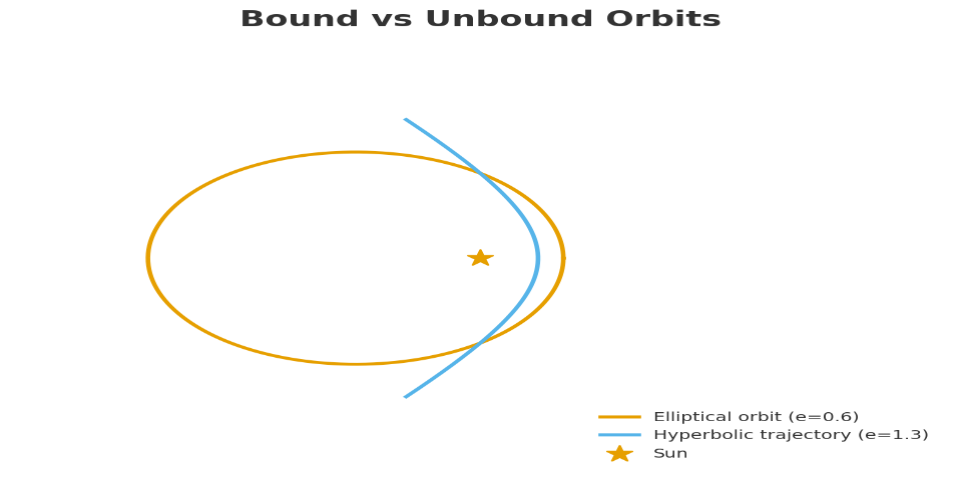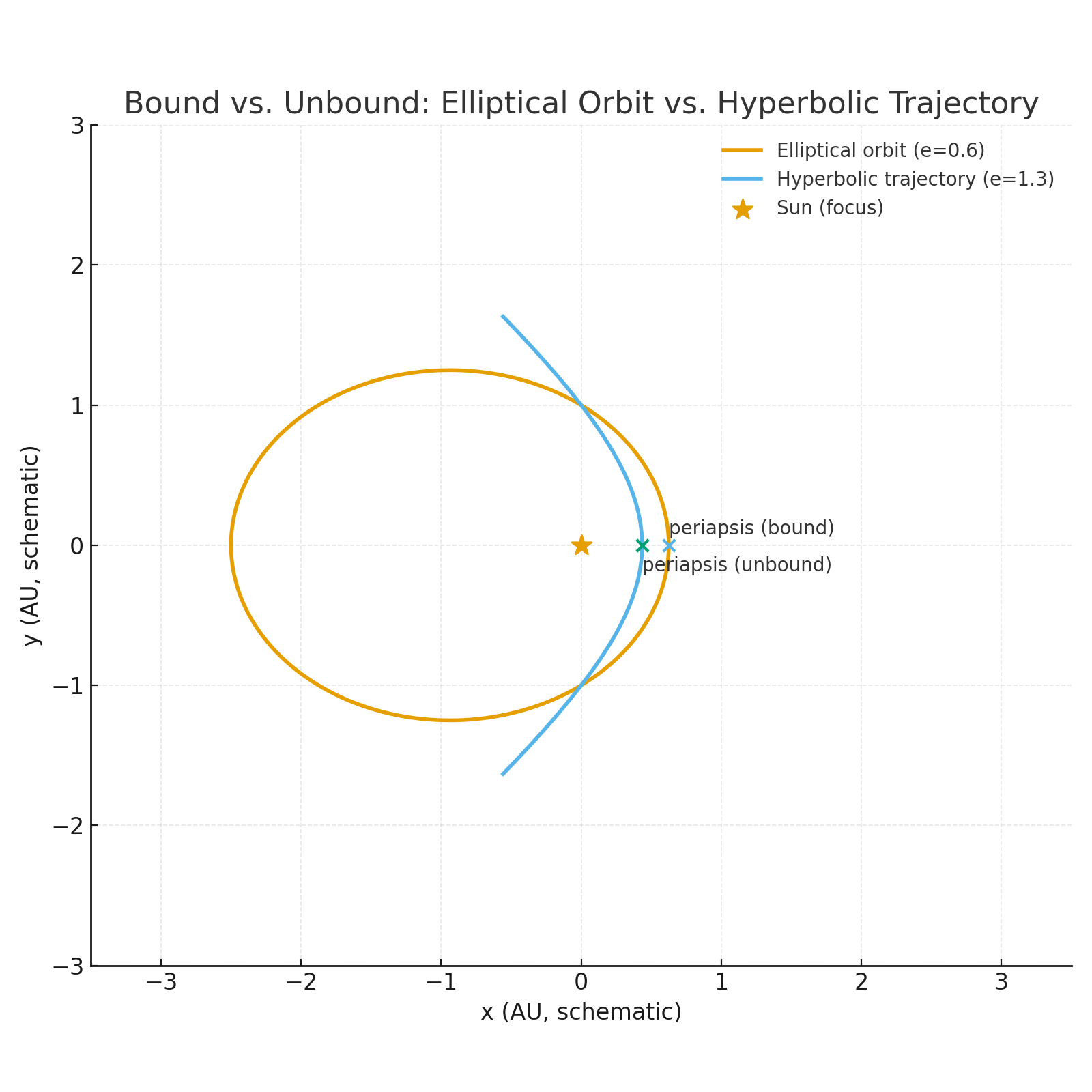
3I/ATLAS: The Interstellar Visitor Older Than the Sun
For the third time in human history, we’ve spotted an object that doesn’t belong to our Solar System — 3I/ATLAS.
It’s not an asteroid, not a comet in the usual sense — it’s an interstellar visitor, a fragment of another star system just passing through. Discovered on July 1, 2025 by the ATLAS telescope in Chile, this icy body is following a hyperbolic orbit — the mathematical signature of something that came from far beyond our Sun’s reach.
A Visitor From Beyond
Only two interstellar objects had ever been seen before:
- 1I/ʻOumuamua (2017) — a cigar-shaped mystery that zipped by too fast to study closely.
- 2I/Borisov (2019) — a clear comet, similar to those in our Solar System but traveling too fast to be bound by it.
Now, 3I/ATLAS joins this exclusive club — and it’s already rewriting what we know about how other planetary systems form.
What makes it so special?
Astronomers estimate it could be older than the Sun, perhaps 7–8 billion years old, originating from a region of the galaxy known as the thick disk, where ancient stars reside. In other words, it might carry material from a world that existed before ours.
What Makes It Different
-
Unusual Composition:
The James Webb Space Telescope (JWST) detected a CO₂-dominated coma, meaning it’s releasing mostly carbon dioxide rather than water vapor.
In numbers: the CO₂/H₂O ratio is around 8:1, far higher than any known comet in our Solar System.
This suggests it formed in a much colder environment — maybe near the “CO₂ ice line” of its original star. -
Active Far From the Sun:
3I/ATLAS started outgassing while still billions of kilometers away — something our comets don’t do until much closer.
That means its surface contains ices that vaporize more easily than water, like carbon dioxide or carbon monoxide. -
Weird Light Behavior:
Polarimetric studies show that the way it scatters light is unlike anything we’ve ever measured.
The polarization drops steeply (–2.7% at a 7° angle) — a strong hint that its dust grains are structured or composed differently from any comet we know.
The Math Behind the Mystery
Heads up: this section includes a bit of math! Feel free to skip it if you just want the big picture — but if you’re curious about what “interstellar” means in equations, let’s unpack it.
In celestial mechanics, the shape of an orbit depends on its eccentricity, denoted by
→ ellipse (bound orbit, like planets and most comets) → parabola (barely escaping) → hyperbola (unbound — coming from and returning to infinity)
For 3I/ATLAS,
That tells us, unequivocally, it’s not gravitationally bound to the Sun.

The same conclusion comes from the total orbital energy:
If
For 3I/ATLAS, its velocity at infinity (the speed it’ll have after leaving the Solar System) is roughly 26 km/s, meaning it came from elsewhere in the galaxy — likely ejected from another star’s planetary system long ago.
Mathematically, the orbit traces a hyperbola, open to infinity:
where
This form makes it clear: as
How Empty the Space Between Stars Really Is
The sheer emptiness between solar systems is almost beyond imagination.
The nearest star, Proxima Centauri, is about 4.24 light-years away — that’s 270,000 times the distance from Earth to the Sun.
Even if every star ejects trillions of icy fragments like 3I/ATLAS, they’re so spread out that the average density is roughly:
1 interstellar object per 100 cubic astronomical units (AU³)
That’s like tossing a single pebble into the volume of Neptune’s orbit and waiting millennia for one to wander close enough to see.
Some 2024 studies even suggest these objects travel in braided galactic streams — long rivers of ancient debris moving through the Milky Way, occasionally intersecting our path.
3I/ATLAS may be part of one of these streams, crossing our Solar System by pure cosmic coincidence.
Why It Matters
Each interstellar visitor gives us a glimpse of a different kind of solar system — a chemistry lab from another sun.
3I/ATLAS, in particular, shows that planets and comets beyond our neighborhood may be built from very different ingredients.
It’s also humbling.
Every few decades, the galaxy sends us a frozen relic — a message in a bottle from another world, written in ice, dust, and motion.
And for a brief moment, before it fades back into interstellar space, we get to read a few of its lines.
References & Further Reading
- Cordiner et al. (2025), JWST detection of a CO₂-dominated coma, arXiv:2508.18209
- Gray et al. (2025), Extreme Negative Polarisation of 3I/ATLAS, arXiv:2509.05181
- Frincke et al. (2025), Near-Discovery SOAR Photometry of 3I/ATLAS, arXiv:2509.02813
- Forbes et al. (2024), He awa whiria: Interstellar Objects as Tidal Streams, arXiv:2409.15371
- Hopkins et al. (2024), Predicting ISO chemodynamics with Gaia, arXiv:2410.01743
Written by Jorge Guzman
Applied Mathematics student, science enthusiast, and admirer of all things cosmic.